I received the 'Raspberry Pi 500', a keyboard-integrated PC that can be purchased for less than 15,000 yen, so I checked its appearance and stability

The Raspberry Pi 500 , a keyboard-integrated PC with a built-in chip with the same performance as
Raspberry Pi 500 – Raspberry Pi
https://www.raspberrypi.com/products/raspberry-pi-500/
◆ Opening and appearance check
Below is the package for the Raspberry Pi 500. In addition, since the Raspberry Pi 500 had not yet acquired technical certification at the time of writing, we applied for the ' Special System for Experiments Using Uncertified Equipment ' before the review.

The Raspberry Pi 500 looks like this. Two types of US and UK layouts were released on Monday, December 9, 2024, and the Japanese layout version is scheduled to appear within the next few months.

The keycaps are approximately 15mm wide and the space between the keys is approximately 3mm.

There are four anti-slip pads on the back and a ventilation hole in the center.

On the back are three USB Type-A ports (one USB 2.0 and one USB 3.0), a microSD card slot, a USB Type-C port, two Micro HDMI ports, a 40-pin GPIO header, and a wired LAN port.

The microSD card included was
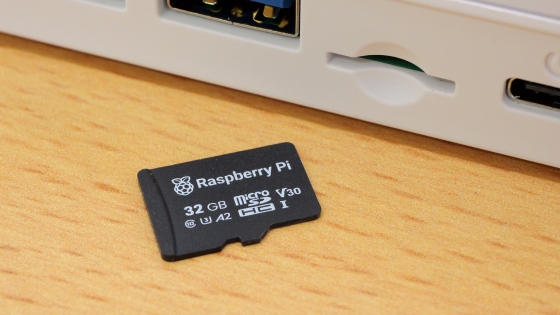
The 40-pin GPIO header is protected by rubber. This is what it looks like with the rubber removed.

There are no ports on the front side.

There's nothing on the left side.
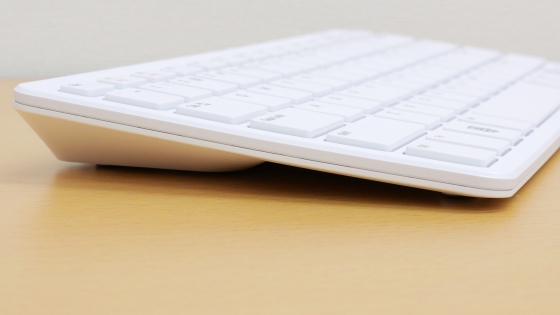
There is nothing on the right side either.

The actual weight was 372g.
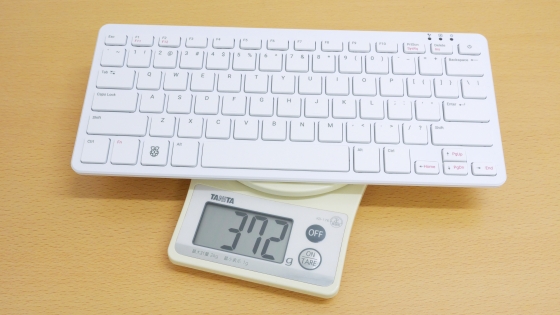
When you connect a display and mouse and turn it on, the Raspberry Pi OS initial setup screen will appear. Once you set the username and Wi-Fi connection, you can use it just like a regular Linux PC.
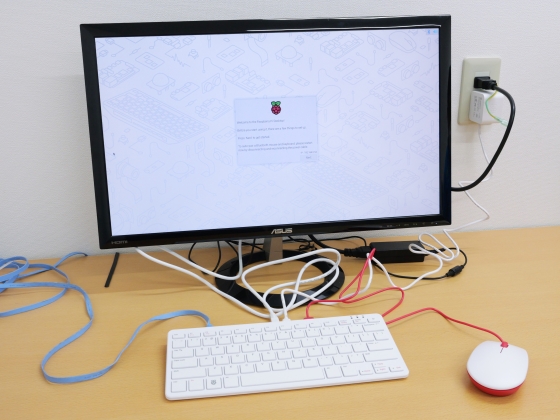
This is what it looks like when connected to the '
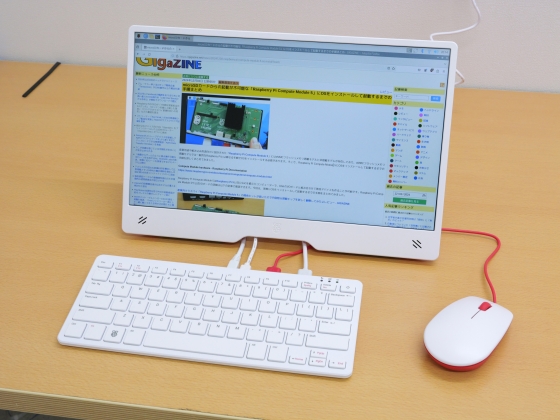
◆Specifications
The Raspberry Pi 500 is equipped with a 4-core Arm processor and a proprietary I/O controller 'RP1' like the Raspberry Pi 5. Detailed specifications are as follows. The price of the US layout version is 90 dollars (about 13,500 yen).
| Product Name | Raspberry Pi 500 |
|---|---|
| CPU | Cortex-A76 |
| Number of CPU cores | 4 cores |
| CPU frequency | Up to 2.4GHz |
| RAM | 8GB LPDDR4X-4267 SDRAM |
| I/O Controller | RP1 |
| External Connections | USB 2.0 USB 3.0 2x Gigabit Ethernet |
| Video Output | Micro HDMI 2 maximum output 4K/60fps |
| Wireless Communication | Wi-Fi IEEE 802.11b/g/n/ac Dual-band (2.4GHz and 5.0GHz) Bluetooth 5.0 BLE |
| GPIO | 40-pin GPIO header |
| Power | 5V DC (via USB Type-C port) |
| Operating Temperature | 0 degrees to 50 degrees |
| size | 286mm x 122mm x 23mm (maximum value) |
| price | $90 (about 13,500 yen) |
◆ Check the stability
The Raspberry Pi 500 does not have a cooling fan. I was concerned about stability under long-term load, so I ran the following command to run all four CPU cores at 100% and left it overnight.
[code]stress -c 4[/code]
Below is a graph summarizing the changes in CPU temperature (blue line) and CPU operating frequency (green line) when left overnight. The horizontal axis shows the elapsed time, in units of 100 milliseconds. After leaving it for about 8 hours, the CPU temperature remained at around 60 degrees, and the CPU operating frequency was maintained at 2.4GHz as specified. The CPU operating frequency will drop on machines that cannot cool the CPU sufficiently, but the Raspberry Pi 500 seems to be able to cool sufficiently without an air-cooling fan.
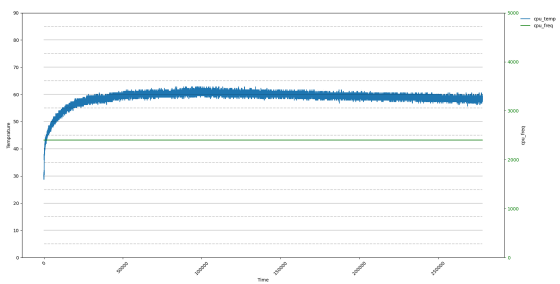
Continued
In order to discover the secret behind the Raspberry Pi 500's excellent cooling performance, we have filed a notice of abolition of the 'Special System for Experiments Using Uncertified Equipment' and then published an article in which we disassemble the device to examine its internal structure.
The stability of the keyboard-integrated PC 'Raspberry Pi 500' was outstanding, so I disassembled it to find out the secret of its cooling performance Review - GIGAZINE

Related Posts:






